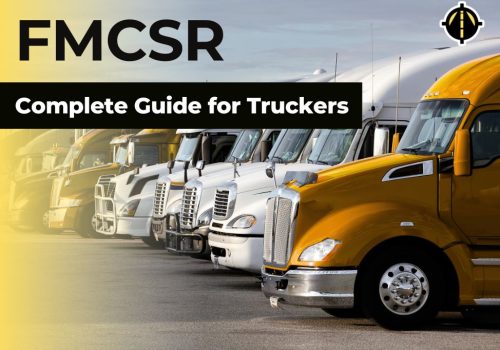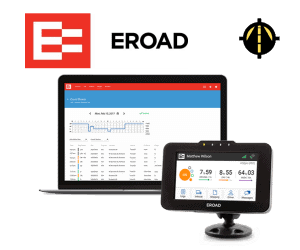For decades, drivers have been recording their hours of service in paper logbooks. However, this approach has made it easy for drivers to cover up violations of the Hour of Service (HOS) regulation.
Many truck drivers salaries are based on the number of miles they drive, which has led to numerous drivers violating the hours of service rule to drive longer and make more money. Some drivers even claim that they have had to break the law to meet the deadlines set by dispatchers.
To improve compliance with the HOS regulation, Congress mandated the use of electronic logbooks (elog) in 2012. This hardware device is attached to the vehicle engine to monitor driving time and transmit data during roadside inspections.
However, there were concerns about how the ELD mandate would affect truck driver’s salary and safety. Drivers who drive longer than the maximum periods permitted by the HOS law can become more stressed.
The Federal Motor Carrier Safety Administration (FMCSA) finalized regulations for the enforcement of the mandate in 2015. The ELD mandate came into effect in December 2017. The FMCSA claims that the mandatory use of ELDs would increase road safety and improve driver health if drivers were to take full advantage of the rest periods required by the regulations to sleep correctly.
Has A Truck Driver Salary Been Affected by The ELD Mandate?
The use of electronic logbooks helps quantify a problem faced by drivers: inroads into their travel time triggered by shippers as well as receivers delaying the loading and unloading of the goods.
Truck driver salary is typically paid by the mile. Then this unpaid “truck driver detention pay” is estimated to cost drivers $1.1 billion a year to $1.3 billion (an average of $1.300 to $1.500 per driver).
Also, this detention period is expected to result in the risk of road accidents due in part to motivating drivers to speed up and compensate for distance that could otherwise not be driven due to detention time outside the permitted working time.
Since the electronic logging devices mandate has been in effect, some impacts are beginning to get into focus. There is now a variety of ELDs available, some at rates below the initial FMCSA predictions.
It has not been clear what effect increased compliance would have on industry operation and truck safety. The legislation was introduced to help solve the lack of truck driver parking spaces that can make it challenging to find a safe place to park when they hit their hour of service time limit.
Therefore, FMCSA has introduced a series of relatively minor changes to the HOS rule, which, in the words of the agency, will improve safety while offering drivers flexibility.
Truck Driver Salary Is Making ‘Big Moves’

There have been spikes before, but nothing like what we are now experiencing.” Since June 2017, overall truck driver salary numbers have risen by 10% to 12%.
In 2018, approximately 50% of all drivers in the quarterly report on trucker pay got truck driver salary increases, according to the National Transportation Institute, while just 11% did so the previous year.
Sign-on incentives for flatbed truck driver salaries have risen from $1,500 in Q2 2017 to $6,000 in Q2 2018.
That is pretty unprecedented, and these are massive changes. Typically, drivers experience wage bumps as freight rates increase, and freight rates grow by 30% year-over-year.
Effect of Mile’s Truck Driver Salary Pay
One of the reasons many truck drivers expressed concerns about the stringent implementation of the HOS law would be that the truck driver’s salary/pay is by the mile for most interstate truck drivers.
And this limits the number of hours they can drive in a day and a week, thus inevitably imposing a limit on truck driver salary earnings.
The Impact of truck driver salary Pay by the Mile on Safety
The limits on truck driver salary pay also amplify the economic effect of any delays they may face during their working hour, such as traffic problems or hours invested in waiting for the loading or unloading of their goods.
Multiple studies have shown a correlation between mile-paying drivers, driving time limits, and driver propensity to speed and work more hours.
Speeding is dangerous in two ways: it reduces the driver’s response time to events, increases the probability of collisions, and also increases the severity of accidents.
Working longer hours is linked to fatigued driving and result in an increased risk of accidents.
The hour of service (HOS) regulation allows drivers considerable flexibility to handle delays, as they will have up to 14 hours of duty every day, of which up to 11 hours of driving are spent.
Is This Flexibility Advantageous?
This flexibility sometimes cannot sound advantageous because it may enable a mile-paid driver to be on duty without charging for up to 3 hours a day.
In 2015, before the Fixing America’s Surface Transportation Act (P.L. 114-94) was enacted, that further re-authorized surface transportation programs, such as FMCSA ‘s activities. The American government recommended that commercial drivers subject to the hour of service regulations which are getting paid by the mile, should be paid for the hours these drivers spend on duty but not driving.
Studies say the agreement causes drivers to minimize their working hours, thus reducing the risk of fatigued driving. However, the proposal has not been enforced.
Advantages of ELD Mandate on Truck Driver Salary and Incentive
Most truckers claimed that if the ELD law came into effect, they would be getting out of the business.
A necessity for more carriers on the road started growing upon leaving. The new demand has seen truckers at better pay getting more loads. Truck driver salary pay has increased from 10 to 12% since June 2017, with half of the truckers surveyed in the quarterly survey of the National Transportation Institute earning pay increases in 2018.
Carriers may use ELD technology to measure payouts and incentivize good driving. The truck driver salary pay can be modified to create clear compensation models by seeing hours, activity, and efficiency.
Fleet managers may also create performance-based incentive programs for drivers who have robust safety and productivity records.
Many fleet companies take on the perceived disadvantage that some carriers see in ELDs, transforming it into a vast opportunity to rapidly earn more money.
The Domino Effect

Another domino effect was always that the freight had to be ready sooner because drivers began leaving earlier in the day.
As a result, some motor carriers had to have load planners and dispatchers start their days earlier to face these new scheduling challenges.
And this resulted in adjustments to the schedule for several internal support workers who work for fleet company carriers.
Another issue was the need for those shunt drivers, city drivers, city trucks, as well as office workers, and the 3rd Party Temporary Driver Services increase.
Many shipping companies have made a conscious decision to increase truck driver salary pay for the driver.
The truck driver does not want to lose financial ground.
Conclusion
Not every driver has witnessed the kind of double-digit pay that many truckers have enjoyed.
Many experienced drivers who began trucking more than four decades ago after graduating from high school now get paid less due to ELD mandate regulations.
Many truck driver salaries were about $5 an hour in 1977 . That was about $21.50 an hour in 2018. That soon might have bumped up to over $30 an hour in today’s dollars.
But presently, many truck drivers salaries are just under $25 an hour as a line-haul driver for companies like XPO Logistics, one of the world’s largest logistics firms.
Many truckers who are getting paid by the mile have seen their income fall due to the ELD mandate. This is because now, with ELDs, it is much more difficult to fudge the numbers.










 Answer 5 simple questions to request a
Answer 5 simple questions to request a